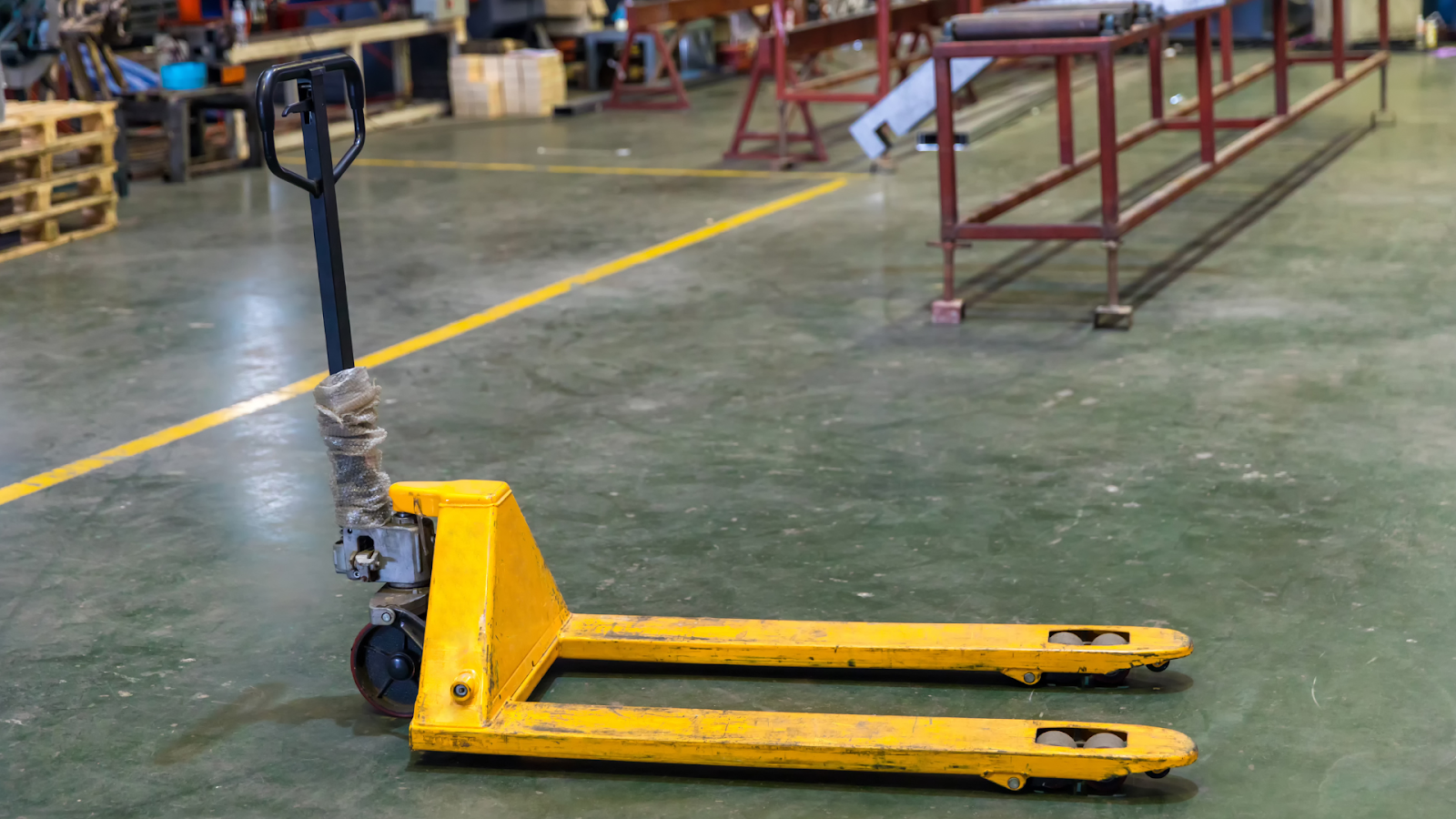Every year, around 2.78 million workers are estimated to die from workplace accidents and work-related illnesses, with another 374 million workers experiencing non-fatal workplace injuries. These figures represent a profound human and operational cost, underscoring a universal truth: industrial safety is not a fundamental component of any successful operation.
The goal of safety compliance is not merely to pass an inspection but to create an environment where hazardous incidents are systematically engineered out of your daily operations. It transforms your facility from a place where rules are followed to one where risks are proactively managed.
This guide provides clear, practical insights into key compliance requirements and best practices, helping you protect your workforce, avoid costly violations, and create a safer, more productive facility.

Industrial safety compliance is the systematic adherence to laws, regulations, standards, and procedures designed to ensure a safe and healthy work environment. It is not a one-time project but an ongoing operational discipline.
For you, this means establishing clear protocols, providing appropriate safety equipment, and maintaining thorough documentation to meet the requirements set forth by authorities like the Occupational Safety and Health Administration (OSHA).
The significance of this discipline extends far beyond the fundamental moral imperative to protect your team. Its impact is measured in tangible business outcomes. Here’s why it matters:
Your employees are your most valuable asset. A compliant safety program protects them from workplace hazards. This will reduce the risk of injuries and associated workers' compensation claims. By taking this proactive approach, you also reduce your organisation's risk of facing regulatory fines and legal action, leading to a more stable operational foundation.
Safety incidents create substantial direct and indirect costs, from medical expenses and equipment damage to production delays and increased insurance premiums. Consistent compliance helps control these variable costs, contributing to predictable operational budgeting and protecting your company's financial health.
Workplace accidents disrupt workflows and divert resources toward investigation and remediation. A compliant operation experiences fewer unplanned interruptions, maintaining consistent throughput and delivery schedules. This reliability strengthens your position with customers and partners who depend on your operational consistency.
Proven dedication to safety makes your organisation more appealing to skilled workers in a competitive job market. It also reinforces your reputation with clients and partners as a reliable, professional operation that values its people and manages risk effectively.
These business benefits are achieved by systematically implementing specific, required frameworks, beginning with these fundamental OSHA standards.

Understanding OSHA regulations is a fundamental requirement for operational leadership. While standards apply across numerous industries, several key regulations form the essential foundation for most industrial and warehouse environments.
These rules are not about mere adherence; it is about implementing proven frameworks that prevent workplace injuries. Here’s what you need to know:
This regulation, often referred to as the "Right-to-Know" law, requires you to identify and communicate chemical hazards in your workplace. Your obligations include maintaining Safety Data Sheets (SDS) for all hazardous chemicals, ensuring proper container labeling, and implementing a training program so employees understand the risks and protective measures.
Lockout/Tagout (LOTO) is a standard designed to prevent the unexpected energisation or startup of machinery and equipment, safeguarding employees from hazardous energy releases during servicing or maintenance. You must establish a formal energy control program with specific procedures, training, and annual inspections.
OSHA requires you to assess your workplace for hazards that may necessitate the use of Personal Protective Equipment (PPE). If hazards are present, you must provide appropriate PPE, such as safety glasses, gloves, respirators, or hearing protection, at no cost to employees and ensure its proper use. This standard mandates that you select equipment that fits correctly and provides adequate protection against the identified risks.
Your facility must have a written emergency action plan if OSHA requires it. This plan must include procedures for reporting emergencies, evacuation routes and exits, and accounting for all employees after an evacuation. You are also responsible for training employees on these protocols and reviewing the plan whenever responsibilities or layouts change.
This standard addresses slip, trip, and fall hazards, which are among the most common causes of workplace injuries. You must keep all walking surfaces clean, orderly, and free of hazards.
Requirements also include installing guardrail systems for surfaces with fall hazards, providing fall protection, and ensuring secure ladder access. Maintaining integral infrastructure like mezzanine gates and secure flooring is a primary component of meeting this rule.
Identifying compliance gaps is the first step. Our team can help you translate these requirements into actionable solutions. Contact us today to understand how to safeguard your workplace.
While understanding regulations is essential, true operational excellence is achieved by implementing best practices that exceed these baseline requirements.

Moving beyond compliance requires a commitment to operational excellence where safety is integrated into every process. These best practices provide a framework for building a resilient safety program that protects your personnel, minimizes downtime, and strengthens your overall operation. Implementing these strategies transforms safety from a regulatory requirement into a competitive advantage.
A great safety culture is the foundation of an incident-free workplace. This goes beyond annual training modules to create an environment where every employee feels personally responsible for their safety and the safety of their colleagues.
Your program must include initial onboarding for new hires that emphasises safety protocols from day one. Conduct regular, role-specific refresher training that addresses the hazards unique to each job function.
Most importantly, empower your employees to report near-misses and potential hazards without fear of reprisal. Leadership must visibly champion safety initiatives, participating in walk-throughs and openly discussing safety performance to demonstrate its priority.
A comprehensive emergency plan ensures your team can respond effectively to incidents ranging from medical emergencies to fires and chemical spills. Your plan must be specific to your facility's layout and hazards.
Clearly map and mark evacuation routes, ensuring they remain unobstructed at all times. Designate and train a team of employees to serve as emergency coordinators. Schedule and document realistic drills for each type of emergency scenario at least annually.
These drills test the effectiveness of your plan and familiarize your workforce with response procedures, reducing panic and ensuring a swift, organized reaction during a real event.
Thorough documentation is your objective evidence of a functioning safety program. It provides a defensible history of your compliance efforts and is often the first thing an OSHA inspector will request. Maintain organized and accessible records of all safety training activities, including attendee sign-in sheets and materials covered.
Keep logs of all workplace injuries and illnesses as required by OSHA Form 300. Retain inspection reports for equipment like forklifts, press brakes, and fire extinguishers. Ensure Safety Data Sheets are readily available to all employees for every hazardous chemical on site.
Proactive and systematic audits are essential for identifying hazards before they lead to an incident. These assessments move beyond simple checklist compliance to evaluate the effectiveness of your entire safety program.
A thorough audit examines equipment condition, employee practices, documentation completeness, and management system integration. It requires a methodical approach to ensure nothing is overlooked.

A successful audit requires careful preparation to ensure it is thorough and valuable. Follow this step-by-step process:
Determine the focus of the audit. Will it be a general review of the entire facility or a deep dive into a specific area, such as lockout/tagout procedures or chemical storage? Clearly define what you aim to achieve, whether it's verifying compliance, assessing risk, or evaluating the effectiveness of a new safety initiative.
Select a team with the right expertise. Include a mix of personnel: a manager who understands operational priorities, a safety professional with regulatory knowledge, and frontline employees who have intimate knowledge of the tasks and potential hazards. An outsider’s perspective can also be valuable for identifying oversights.
Create a checklist based on the OSHA standards and internal policies relevant to your audit's scope. This tool should prompt inspectors to look for specific evidence of compliance or non-compliance, such as reviewing training records, inspecting equipment guards, and observing work practices.
The team should observe work as it is normally performed, interview employees at all levels, and inspect equipment and facilities. Document findings meticulously with photographs, notes, and specific examples. The goal is to gather objective evidence, not to place blame.
After the inspection, compile all data to identify trends and root causes of deficiencies. Prioritize the findings based on the level of risk they present. For each finding, assign a responsible party, a specific corrective action, and a realistic deadline for completion.
Share the audit results transparently with leadership and employees. Most importantly, implement the corrective action plan and schedule follow-up audits to verify that actions have been taken and are effective. This closes the loop and demonstrates a commitment to continuous improvement.
These practices are proven in theory, but their real-world impact is best demonstrated through examples of successful implementation.
Examining real-world examples provides concrete evidence of how a strategic focus on safety compliance delivers measurable operational benefits. These case studies show how companies across various industries have revamped their safety programmes, leading to fewer incidents, lower costs, and a better company culture.
The lessons learned from these successes offer a practical blueprint for your own safety initiatives.
Facing high incident rates in construction, this company implemented a comprehensive safety and health program. Management demonstrated a visible commitment by integrating safety into all operational meetings and planning sessions.
The program focused on proactive hazard analysis, extensive employee training, and empowering workers to stop any unsafe activity
This cultural shift resulted in a substantial decrease in recordable incidents and workers' compensation premiums, demonstrating that leadership engagement and worker involvement are key drivers of safety success.
This program partnered with small manufacturers to address ergonomic hazards through practical interventions. They conducted detailed workplace assessments and implemented relatively simple, low-cost solutions such as adjustable workstations, mechanical lifting aids, and anti-fatigue matting.
These ergonomic improvements led to a substantial decrease in musculoskeletal disorders among workers. The case demonstrates that systematic assessment and targeted equipment solutions can effectively reduce physical strain injuries without major operational disruption.
Operational safety compliance in manufacturing is often challenged by complex regulations, evolving standards, and the constant pressure to maintain productivity without incident. These challenges can lead to costly downtime, legal penalties, and, most importantly, put your workforce at risk.
Source Equipment understands the critical role of reliable safety solutions and offers a wide range of industrial products designed to meet stringent safety requirements while supporting smooth operations.
By partnering with Source Equipment, you gain access to durable, compliant equipment and expert guidance tailored to your facility’s unique needs. We ensure your safety infrastructure not only meets regulatory standards but actively contributes to a safer, more efficient workplace.
Take control of your facility’s safety compliance today. Contact Source Equipment to discuss your needs and request a customized solution that protects your workforce and supports your operational goals.
Begin with a comprehensive hazard assessment of your facility. Identify all potential physical, chemical, and ergonomic risks. This assessment forms the foundation for your safety protocols, PPE selection, and training priorities, ensuring your program targets specific operational risks.
OSHA requires initial training for new hires and when new hazards emerge. Best practices include annual role-specific refreshers and emergency drills. Increase frequency for high-risk activities or if incident trends indicate a need.
Focus on hazard communication, lockout/tagout procedures, fall protection, respiratory protection, and forklift training. These areas consistently rank as the most frequently cited violations across industrial environments.
Designate a knowledgeable representative to accompany the officer. Keep all documentation organized and accessible. Answer questions factually without volunteering extra information. Consult legal counsel if citations are issued.
Maintain OSHA 300 injury logs, training records, equipment inspections, hazard assessments, emergency plans, and safety data sheets. Keep records of safety meetings and incident investigations for at least three years.




Ready to Upgrade Your Process Operations?